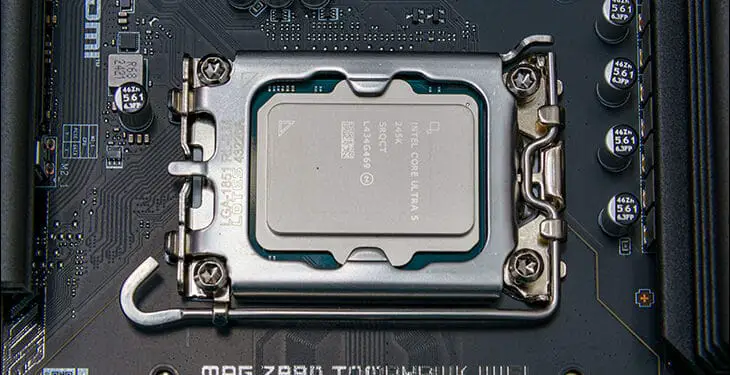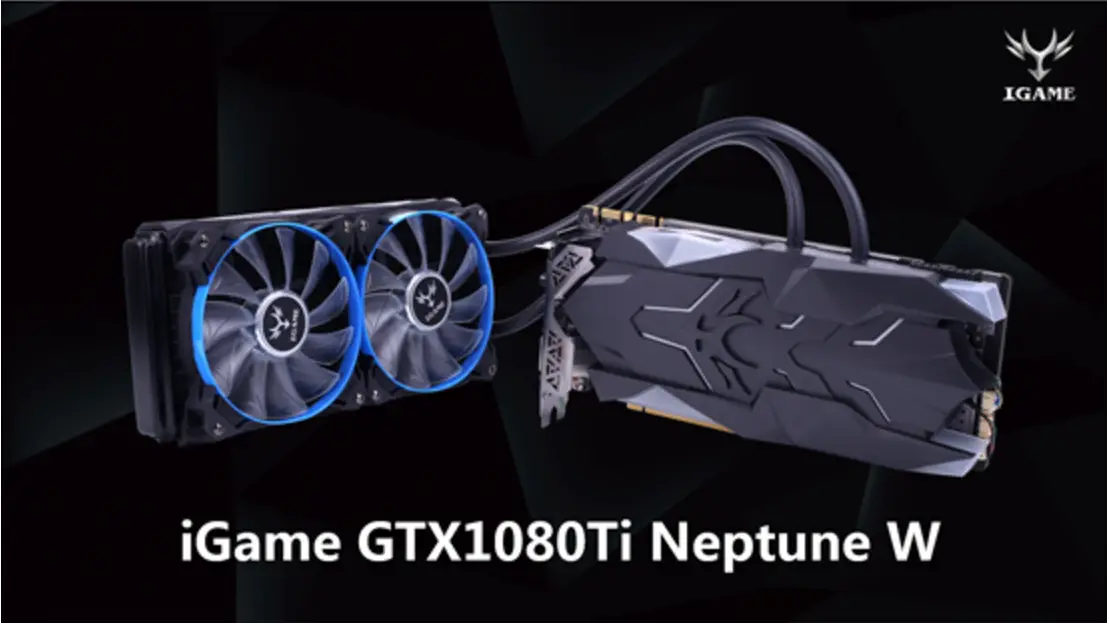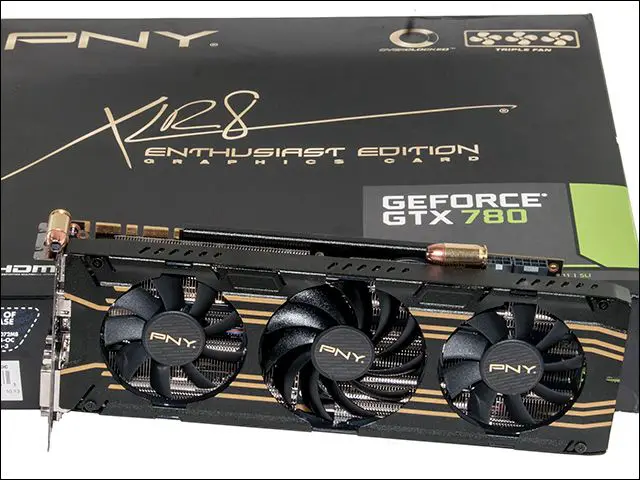Core Ultra 9 285K Final Score: 84%
Core Ultra 5 245K Final Score: 93%
With every new generation of CPUs we like to help convey the complexity of said generation’s pros and cons in as simple a method as possible. For this music and its language crossing abilities are hard to beat. Last generation it was (and boy were we a little too on the nose using a Swedish funeral dirge) Kent’s Da Som Nu For Alltid (“Then as Now, Forever”). For this generation, we went into the Ultra 5 and Ultra 9 review fully expecting it to be Psychostick’s parody they aptly called “I Can Only Count To Four”, or maybe Dirty Dozen Brass Band’s classic “My Feet Can’t Fail Me Now” to describe our feelings towards this new wave of Tile based processors. We were pleasantly surprised when none fit.
Instead, while we could argue that Pete & Bas’ “Just Stepped Into the building” (and is old school British Roadman vibe) is a great match, there are two that instantly spring to mind when thinking about a theme song summary for this generation. The first is obvious. Dr. John’s famous “Right Place, Wrong Time”… as the Core Ultra 200-series deserve a warmer reception than it’s going to get in the current “us versus them” climate which has infected our (sun-setting) society. However, we are more optimistic about the 200-series than that. Not John Lennon “Come Together” levels of optimism, not even Leo Moracchioli’s (angrier, but better) Norwegian Metal cover of it, but nevertheless optimistic with what Intel has wrought in a single generation. Thus, “Big Dawgs” by (up and coming Indian rapper) Hanumankind is most apt at conveying our opinion on what this new breed of Intel desktop processors represents.
That choice will confuse some people. For some that song will just be a nice, catchy addition to their ‘cardio day’ playlist… but few will bother with anything more than a surface level understanding on what is actually being conveyed in those lyrics. To wit, “To Stand On Business”. You say that phrase in certain circles and a lightbulb goes off, they will nod their heads and instantly ‘get’ why you not only did what you did but why you had to do it.
That is actually a great explanation for the radical departure Intel underwent between the release of their 14th and 15th generation of “Core” branded CPUs. After being knocked down, Intel took the time to self-reflect at what they had become, what they had to do to change… and then with a full ten toes down attitude did whatever they had to do to take care of their obligations to both the industry and their future customers. No matter the hit to their pride, or their ego, such a painful move would inevitably lead to… they did it. That willingness is laudable and is rare these days in mega-corps.
After all, Intel could have easily just taken a mulligan, simply translated their 7nm Raptor+GraceMont monolithic architecture over to N3B, upped the frequencies, slapped a Core Ultra 200 label on it, and called it a day. That probably would have netted Intel as good an end result for the 200 series as introducing the Tile architecture to the desktop space right now did. That however, would have done nothing for Intel in the long term and would further damaged their reputation. So instead of the easy thing. The thing some were expecting them to do. Intel did the hard thing.
Make no mistake, it is not easy to admit your pride and joy has gone down a dark,dark path. But they did admit to having a fab problem, then they actually nuked their 20A fab process plans (for at least the short term), and then went to their largest competitor (TSMC) to ensure that their next generation processors were not even remotely built the same as the 14th generation. This owning up and fixing the underlying issue is why they are the Big Dogs of the industry. Big dogs that once again have proven they have a bite (engineering) even bigger than their bark (marketing). Big Dogs not afraid of doing the work and putting the effort in.
Yes. We fully understand that after the major hit to their reputation that Intel has taken recently many are going to write off the Core Ultra 200-series with a… polite “let’s wait and see” approach. Sadly, some will be less polite with a “Talk to the platinum hands on my time piece boy ‘Cause the face ain’t listening” levels of anger coloring their future purchasing decision(s). That is unfortunate and will exclude some very good to excellent choices from ones short list of options.
Once again, make no mistake. (X3D variant of) Zen 5 is (going to be) serious competition for Intel’s Core Ultra 200-series. However, unlike AMD that took not one, not two, but three generations to get a tile/chiplet design that would not randomly have a nervous breakdown during heavy, heavy workloads… Intel has done it in one. Sure, there are probably going to be edge cases (most likely stemming from spreading iGPU components across multiple tiles) where latency storms from a (true) multi-tile approach to CPU architecture will pop up. However, such ‘storms’ are going to be few and far between.
They are going to be rare, because, unlike The AMD Way, Intel’s entire Tile design has been created not (just) with “economy of manufacturing” in mind, but rather have flexibility, agility and performance as their guiding principles. This difference in philosophy is why AMD is “the plucky little company that constantly surprises us” and Intel is the one who gave us DRAM. PCI. USB. ThunderBolt. NUC. M.2… and countless other standards we all take for granted. This depth and width of engineering prowess (and intuitional knowledge) is why Intel were able to weather Pentium’s Flaw, The Sinking of the Itanic, 10nm+++++++, and thanks to Core Ultra 200-series will weather the fab and microcode induced degradation issue of the past.
Put bluntly, Intel’s latest desktop product stack delivers on the promises multi-component CPU design evangelists have been making for years now. Yes. In one fell swoop Intel’s first generation Tile design offers unheard of levels of Flexibility. It offers never before seen levels of Agility. It offers plentiful amounts of Performance. Most of which (even after all these years of trying) AMD’s existing desktop CPU arch’ cannot match. Equally impressive is, unlike AMD’s current line-up, it is not just flagship (3D cache only) models that are noteworthy. In fact, the ‘lowly’ Core Ultra 5 245 K is arguably the true star of the 200-series show. It is a processor that is going to ensure Intel’s grip on mainstream CPUs not only continues but grows stronger and stronger.
So no matter if you like nu-Blue Intel or not. You must respect them and what their engineering team can accomplish when they put their minds to it (and are given the freedom to do it). Now if they would only give us Tile options that increase P and E core count beyond 8+16, an iGPU strong enough to be a true APU, or even just a model stuffed with enough L3 cache it equals upcoming Ryzen 9000X3D models… and we would be truly happy with Intel’s transition to Team Tile. In the meantime, the Intel Core Ultra 200-series is not just an excellent “first try”; instead, it is multi-component CPU design done right. We eagerly await Nova Lake and what (desktop) Tile 2.0 brings to the table.
Core 5


Core 9


The Review
Core Ultra 9 & Core Ultra 5
Intel’s Core Ultra 200-series takes a bold risk with its new Tile-based architecture, addressing past issues with a rapid transition. While ambitious, potential performance problems and the rushed execution could hinder its success, especially against AMD’s more refined chiplet design. Despite its promise, Intel's gamble may not fully meet expectations.









